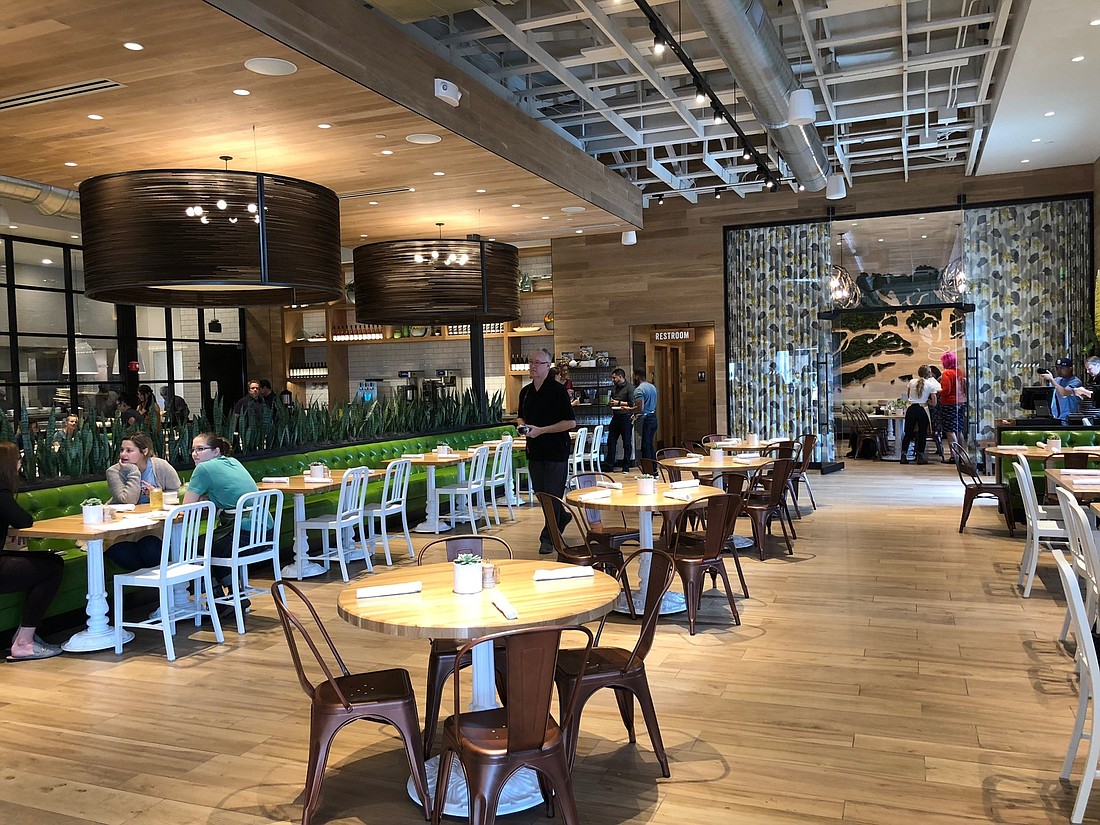
If you want to visit a restaurant, you will obviously find more choices in bigger cities like New York or Los Angeles.
But if you want to open a restaurant, you’ll find better opportunities in a smaller city like Jacksonville. And you’ll find the best opportunities in several Midwestern cities, according to a study by Internet loan marketplace LendingTree.
LendingTree’s study of opportunities for restaurateurs in the 50 largest U.S. metropolitan areas put Jacksonville basically in the middle, ranked 29th.
The company uses its nationwide loan database to survey a wide range of economic activity and one of its most recent was on restaurants.
LendingTree developed a score for each city based on four criteria.
It started with estimated revenue based on data from restaurant owners who applied for small business loans. The median revenue for a Jacksonville area restaurant is $225,072, lower than the national average of $262,961.
Next, it determined payroll costs, based on U.S. Census Bureau data on restaurants for each market. While Jacksonville restaurants generate lower revenue than other cities, its average annual cost per employee is lower at $15,694, compared with the national average of $17,314.
The final two metrics were the number of restaurants per 100,000 households with annual income of at least $50,000, and the number of restaurants per 100,000 residents aged 35 to 54.
LendingTree said those Generation Xers eat out more often than baby boomers or millennials, according to U.S. Bureau of Labor Statistics data, and families with higher incomes go out more.
Jacksonville is right with the rest of the country with 653 restaurants per 100,000 Gen Xers, compared with the national average of 654. However, it has more restaurants per 100,000 higher-income households at 883, compared with 835 nationally. That may reduce opportunities for new establishments.
The most recent U.S. government data on Jacksonville restaurants came in the Census Bureau’s 2012 economic census. It found 589 full-service restaurants in the city of Jacksonville (not the entire metro area) producing $655.2 million in annual revenue.
That’s far more revenue per restaurant than the LendingTree study, but LendingTree was looking at revenue from restaurants that applied for small business loans.
LendingTree’s methodology determined the most promising city to open a new restaurant is Milwaukee, which has fewer restaurants serving those key demographics and higher-than-average median revenue at $350,784.
“Many top spots are in once-overlooked Midwestern cities now experiencing urban renewal,” LendingTree said in a news release.
“The restaurant population in cities like Milwaukee, Cincinnati and Minneapolis cities is less dense than in other areas, and labor costs are lower.”
The three least promising cities to open a new restaurant are places that would be considered foodie destinations: New York, San Francisco and New Orleans.
LendingTree said those cities are “saturated with restaurants” and “have historically been the restaurant industry’s most competitive.”
It’s also tough to make money in New York, with a surprisingly low median annual revenue of $224,640.
LendingTree painted an optimistic picture for prospective restaurateurs overall, saying growing U.S. wages could increase restaurant spending.
It also said in a story on the study posted on its website that “despite commonly held beliefs that nearly all restaurants fail right away, their median lifespan is about 4½ years.”